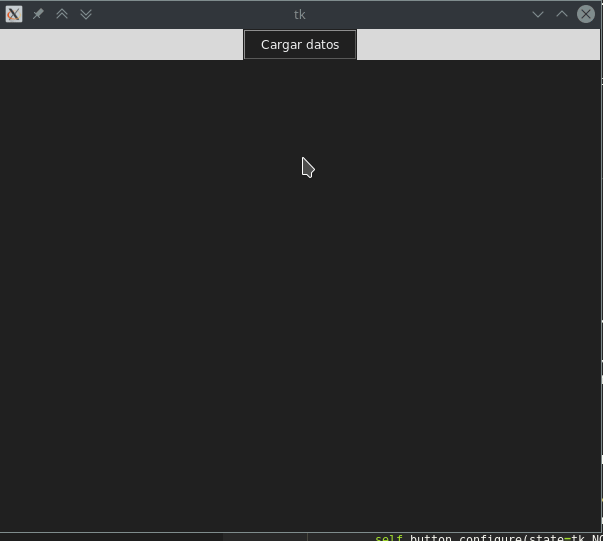Hi, I have a very simple application where I load an .xlsx file in a dataframe with the pandas library and then generate a treeview to show it in table mode. With a file of 100 or 200 rows it takes very little, the problem comes when I try to load a file with 2000 or 3000 records that takes about 1 minute. This is normal? Is there any way to optimize this operation?
In any case I would like to include a progress bar from the Tkinter ttk.Progressbar(parent, option=value, ...) library like this one, in order to show the user how much time is left. Is this possible? synchronize the loading time with the progress of the bar?
Thanks, regards!
I EDIT MY QUESTION BY ADDING CODE
import pandas as pd
import tkinter as tk
from tkinter import ttk
def getTreeViewUser(df, frame):
tv = ttk.Treeview(frame, columns=("#1", "#2", "#3",
"#4",'#5','#6','#7','#8','#9',
"#10","#11","#12","#13","#14","#15","#16","#17","#18"))
tv.heading('#0', text="Col0")
tv.heading('#1', text="Col1")
tv.heading('#2', text="Col2")
tv.heading('#3', text="Col3")
tv.heading('#4', text="Col4")
tv.heading('#5', text="Col5")
tv.heading('#6', text="Col6")
tv.heading('#7', text="Col7")
tv.heading('#8', text="Col8")
tv.heading('#9', text="Col9")
tv.heading('#10', text="Col10")
tv.heading('#11', text="Col11")
tv.heading('#12', text="Col12")
tv.heading('#13', text="Col13")
tv.heading('#14', text="Col14")
tv.heading('#15', text="Col15")
tv.heading('#16', text="Col16")
tv.heading('#17', text="Col17")
tv.heading('#18', text="Col18")
for ind in df.index:
# rojo = df.values[ind][17]
# tag=""
# if(rojo==1):
# tag="col18"
tv.insert("", tk.END, text=ind+1,
values=(df.values[ind][0],df.values[ind][1],
df.values[ind][2],df.values[ind][3],
df.values[ind][4],df.values[ind][5],
df.values[ind][6],df.values[ind][7],
df.values[ind][8],df.values[ind][9],
df.values[ind][10],df.values[ind][11],
df.values[ind][12],df.values[ind][13],
df.values[ind][14],df.values[ind][15],
df.values[ind][16],
df.values[ind][17]))
# tv.tag_configure('rojo', background='#F6CECE')
scrollbar_vertical = ttk.Scrollbar(frame, orient='vertical', command = tv.yview)
scrollbar_vertical.pack(side='right', fill=tk.Y)
scrollbar_horizontal = ttk.Scrollbar(frame, orient='horizontal', command = tv.xview)
scrollbar_horizontal.pack(side='bottom', fill=tk.X)
tv.configure(yscrollcommand=scrollbar_vertical.set)
tv.configure(xscrollcommand=scrollbar_horizontal.set)
return tv
def clickbutton():
file = pd.read_excel('Ejemplo.xlsx')
df = pd.DataFrame(file)
getTreeViewUser(df, main_window).pack(expand=True, fill='both')
class Application(ttk.Frame):
def __init__(self, main_window):
super().__init__(main_window)
main_window.geometry("600x500")
self.button = tk.Button(main_window, text="Button", command=clickbutton).pack()
self.progressbar = ttk.Progressbar(main_window)
self.progressbar.pack()
main_window = tk.Tk()
app = Application(main_window)
app.mainloop()
In this example I have changed the text of the cells by privacy issues but I load it right away, I have the problem with the same number of rows but with different text in each one, and in some cell dates and BOOLEANOS. I do not know how to exactly recreate my problem and I tell you it takes almost a minute and the theme of the progressbar would be to show it in that window and synchronize it with the load of the treeview. Thanks in advance.
Example file: link
I have modified the file so that it simulates my problem a little better by filling some columns with dates and booleans as in the original file.
